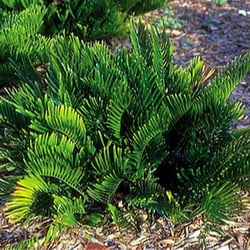
Home / Here on Earth / Summer Landscaping and Lawn Care Tips
Landscaping and lawn care is a year-round practice that requires specific upkeep for the changing seasons. Summer landscaping is quite the hassle, especially for people who live in tropical areas such as Florida. Between the heat, the fluctuating humidity and dryness, and the pests that find you and your backyard to be a feast, there is a lot to handle. But not to worry! We have gathered some summer landscaping tips to help you spend less time wrestling with weeds and more time basking in the glow of your property.
Summer Landscaping Tips
1. Time Your Water Wisely
Summer heat is no joke. Water from a hose or irrigation system can easily evaporate without being absorbed into your plants' roots or leaves. Worse, the water can begin to overheat, causing heat damage to the plant.
Because of this, it is recommended you water your yard early in the morning or later in the evening. The grass is not fully exposed to the sun at those times, so the risk of the grass getting damaged is lessened.
2. Mow Regularly and Mow Right
Mowing your lawn is already a habit you should maintain regardless of the season, but in summer is when it gets finicky.
If it rains often, the grass will grow rapidly, requiring you to mow it more. This is fine, however, you should be careful not to over-mow. Cutting your grass too short or too often can damage the roots. Mowing once a week with the appropriate settings will help keep your grass healthy and green.
3. Fertilize and Mulch
Using mulch along with or instead of traditional soil comes with many benefits. It holds in moisture, meaning the grass can go without being watered for longer than it would if it were just soil. On top of that, mulch prevents weeds from surrounding your plants, so they are safe to grow without interruption.
Applying mulch is not as easy as dump and go. You do need to pay close attention to how much you are using and how to apply it. The amount of mulch you use depends on the type of mulch you have as well as the plant you are using it on. Generally, most the professional landscapers recommend having your mulch layer be 2-4” inches thick with an 8-12” radius around the plant of focus.
4. Use Native Plants
Not only is utilizing native plants the environmentally conscious choice, but it has its benefits too. There are a variety of native plants which naturally resist drought, disease, and even heavy sun exposure.
Here are some examples of native Florida plants.
.jpg?width=250&height=186&name=DTEL-%20Blog%20(6).jpg)
i. Wax Myrtles
- Wax myrtles are easy to care for because they do a lot of the work themselves.
- Loving full sun and sandy soil, they can even be easily pruned and shaped for aesthetic. Wax myrtles also attract butterflies while providing food and shelter for native birds.
ii. Coonties
- Coonties are a perfect choice no matter where you put them.
- Loving the sun and shade equally, this plant will thrive in the blazing heat and even brave those winter temperature drops.
iii. Firecracker Plant
.jpg?width=250&height=186&name=DTEL-%20Blog%20(7).jpg)
- Firecrackers are as explosive as they sound, with long tube-like flowers ranging from red to yellow in color.
- These flowers attract hummingbirds and butterflies while adding beautiful pops of color that bloom year-round.
Using these tips can help keep your property looking photo-ready all year long. Summer landscaping sounds like a lot of hard work because it is. Lawn and landscape professionals are trained and licensed to bring your property to its best condition. Down To Earth staffs licensed and certified landscape professionals, horticulturists, and arborists so we can serve you best, whatever your landscape needs.


.jpg?width=250&height=186&name=DTEL-%20Blog%20(5).jpg)